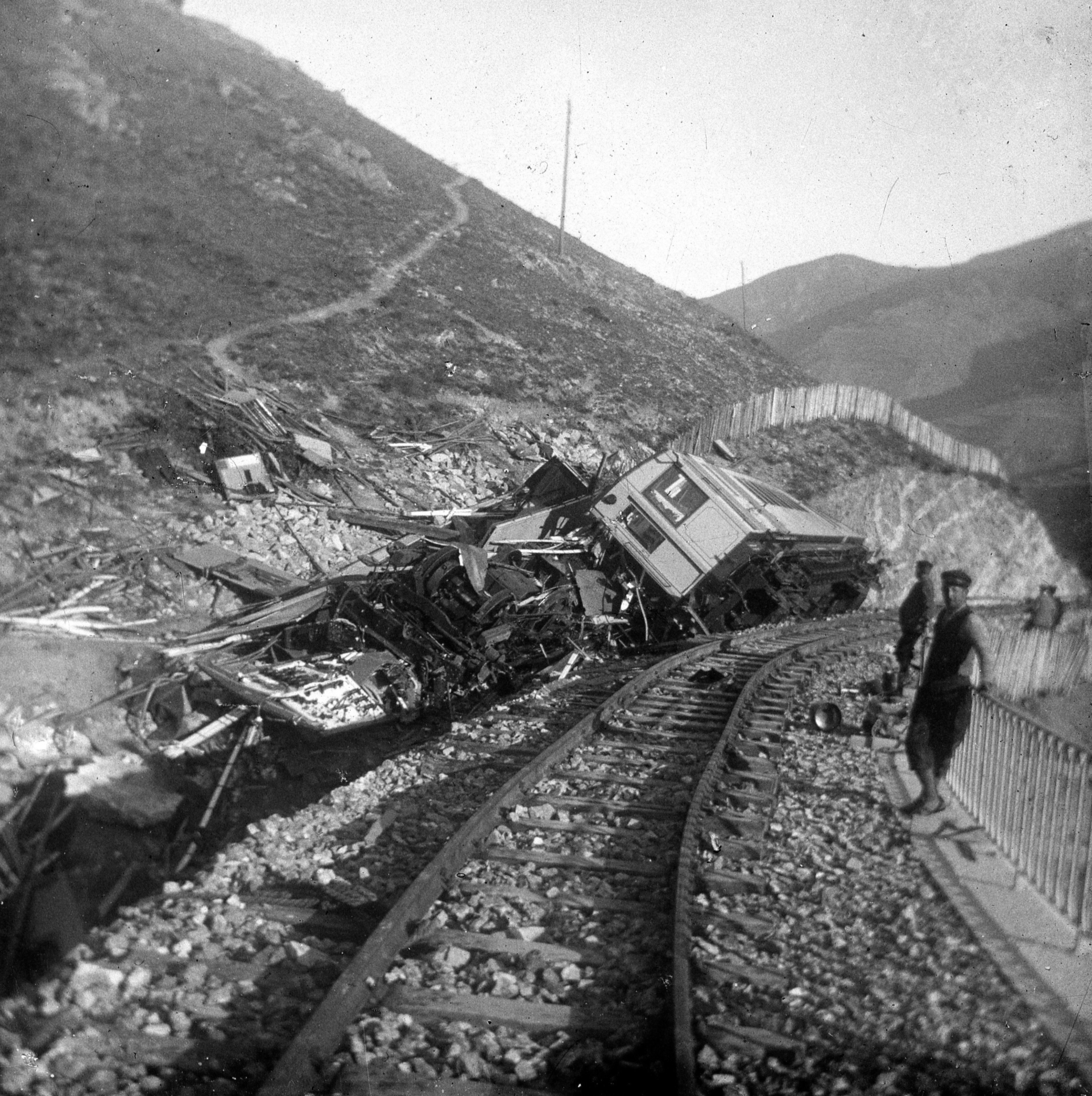With this section and the collection « Les Carnets du Train Jaune » (Yellow Train Notebook, Ed. Talaia), we offer a retrospective, a journey back in time through the construction of the Yellow Train line and its history. This collection is the result of collaboration between the Parc Naturel Régional des Pyrénées-Catalanes and historians Pierre Cazenove and Jean-Louis Blanchon.
In this second part, we take a closer look at one of the technical feats of the Yellow Train line : construction of the Gisclard bridge !
The catastrophe of 31 October 1909
The tests of 31 October 1909
The Cassagne rigid suspension bridge ” Gisclard ” system was in fact a full-scale prototype. It would allow us to check whether the calculations that authorised its revolutionary design met the standards imposed by the Ministry of Public Works. The official tests to validate the structure took place on 30 and 31 October 1909. This certification was necessary for opening the line and allowing its commercial operation by the Compagnie des Chemins de Fer du Midi, which has obtained the concession.

Bridge builder Ferdinand Arnodin, his son-in-law engineer Gaston Leinekugel Le Cocq, and Albert Gisclard were present for the tests on Saturday 30 and Sunday 31 October 1909. After passing over the bridge at reduced speed (22 km/h), the train turned back at walking pace and parked for a few moments in the middle of the deck. It was loaded with 35 tonnes of railway sleepers, evenly distributed along the length of the structure. The train was then split into two equal parts, one of which would drive over the bridge several times to take further measurements, before heading for Mont-Louis / La Cabanasse. The other half of the train, which was to take the engineers and other personnel to Fontpédrouse, would be parked for an hour or so downstream of the bridge.
The catastrophe of 31 October 1909
The official certification tests were entirely satisfactory and met the standards set by the Ministry of Public Works. Unfortunately, just as the engineers and staff preparing to leave for Fontpédrouse were completing their measurements and packing up their equipment, the train, under the responsibility of engineer François-Joseph Lhériaud, unexpectedly began to roll away. After a few minutes totally out of control, it ended up about 700m further on, crashing into the mountain walls. It was 31 October 1909, just before 1.00pm.
Five people and Albert Gisclard (who left a widow and three orphans) were killed in this terrible tragedy. François-Joseph Lhériaud (traction engineer), Ferdinand Arnodin, and Gaston Leinekugel Le Cocq (who jumped from the moving train), with François Calvo, an official with Cie. du Midi, and five other passengers, were only injured.

